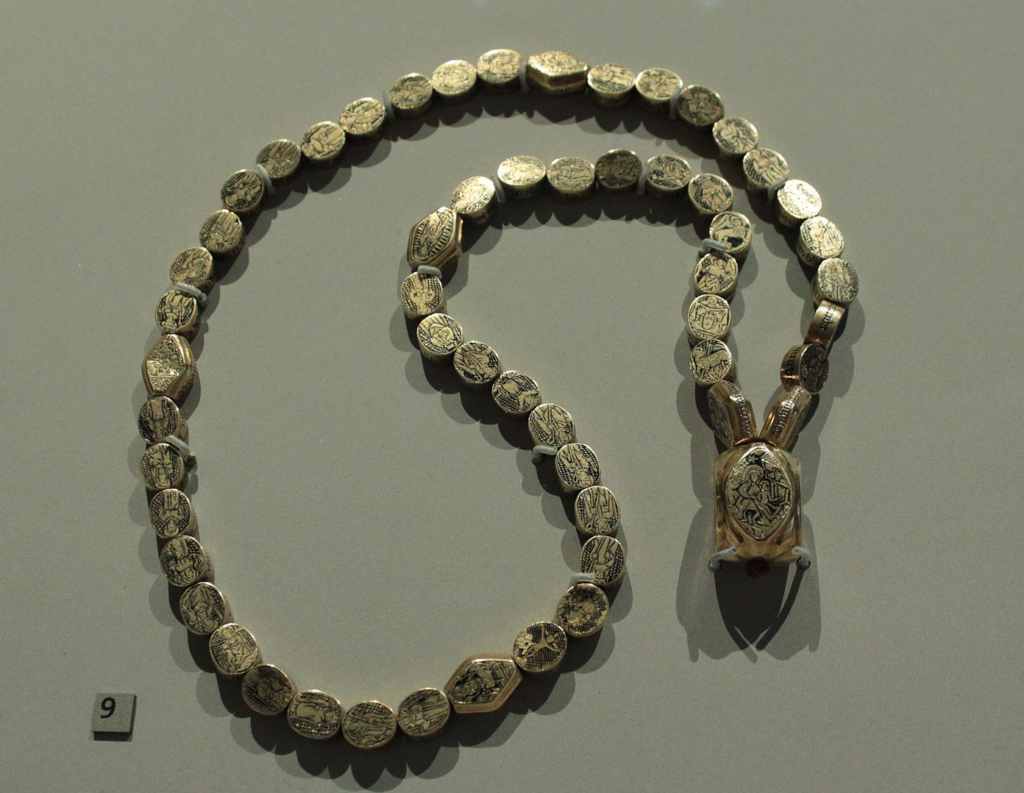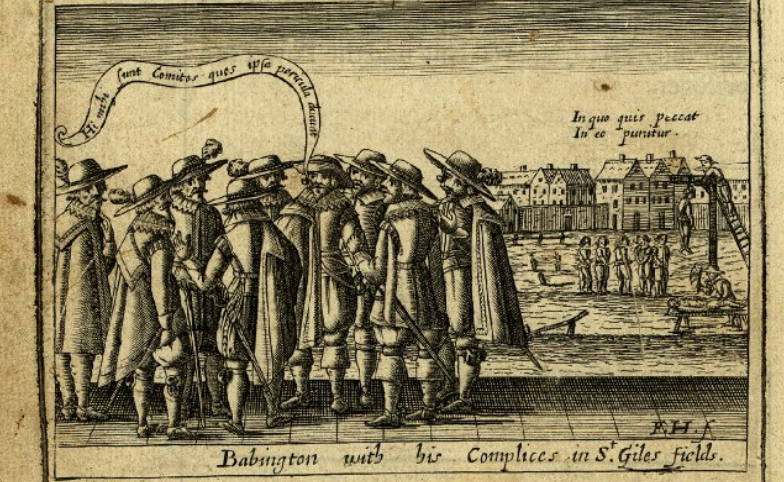By Sarah Johanesen
The early modern historian, Sarah Johanesen, discusses her research on disguise within Catholic culture, and the place of physical deception in anti-papal conflict and intra-Catholic disputes.
Sarah’s research recently appeared in her prize-winning article, ‘That silken Priest’: Catholic disguise and anti-popery on the English Mission (1569–1640)’, now available Open Access in the February 2020 issue of the IHR’s academic journal, Historical Research.
After Elizabeth I “settled” the religion of England in 1559, Catholicism never again enjoyed the position of state religion among its people and became a minority faith. Generations ago this justified ignoring it entirely. English Catholicism was typified as a heroic or monstrous lost cause; it had barely any influence over the nation, its politics, or cultural identity – except when good English Protestants soundly expunged it. In the late sixteenth and early seventeenth centuries, of course, the fact of Catholicism’s consignment to minority status was still in the making, the future entirely uncertain.
Ever since John Bossy’s English Catholic Community (1975), a wealth of scholarship, delving into Catholicism’s place in a majority-Protestant society, has re-assessed its importance. Nowadays the argument for the political significance of English Catholics and Catholicism, has been largely won. It is recognised that they not only posed an ideological or existential threat to the Protestant state, but influenced local and state affairs as courtiers, and influential landowners. English Catholic ties to co-religionists in Ireland, Scotland, and on the continent, continued to shape foreign policy in this period, as much as it influenced Catholic approaches to the crown and its officials.
The extent to which Catholicism and Protestantism developed in constant dialogue, with each other and with their shared pre-Reformation past, has also become increasingly apparent. An exploration of the cultural and material products of the Reformation, such as texts, images, performances and devotional objects, has been key to this shift in perspective. Such studies have questioned the extent to which Protestantism eschewed art, or to which Catholicism prioritised the sensory and material. They have also provided evidence for Catholicism’s continued devotional vitality and innovation, complicating narratives of unbroken traditionalism or staid conservatism. Recent work on Catholic material culture has focused on devotional objects such as wax discs known as agni dei, rosary beads, crosses, relics and the equipment needed for a Roman Catholic mass.

Yet my research argues that investigating how Catholics used not only devotional, but non-devotional materials such as weapons, portraits or clothing, can add much to our understanding of their political position in post-Reformation England. The fact that material objects can mean multiple, often conflicting things to different people, can unsettle our often-binary understanding of English Catholics as loyal or disloyal. Paying attention to material things and objects – looking at how they were used by Catholics, considering the meanings they could carry, and their interpretation by different groups – foregrounds a battle over the meaning of materials. This was a battle waged not only between Protestants and Catholics, but within those groups, and it constituted a significant part of ongoing debates about Catholicism, treason and religion.
This can be clearly seen in the Catholic use of disguise and the reaction to it from 1569, when the first seminary priests, educated in exile, returned to England as missionaries, to the eve of the Civil War. By 1569 Catholic worship was, of course, illegal, and the state was concerned with rumours of Irish as well as English rebellions and invasions. Increasingly priests and their harbourers were imprisoned, and executed as traitors. Expecting the state’s hostility the English Catholic authorities sent their priests in disguise, hoping to increase their chances of contacting the faithful and conducting Roman Catholic worship in secret.
Yet disguise in the sixteenth and seventeenth century was loaded with negative connotations. Protestants immediately pointed to Catholic priests using disguise as evidence for their disloyalty, using the materiality and language of clothing to emphasise their wearers as an immoral threatening force. By 1624 George Carleton’s description of Babington Plotter and priest, John Ballard, as ‘that silken Priest’ relied on just one type of fabric to communicate a litany of dangerous cultural connotations: avarice, effeminacy, pride, foreignness, hierarchical disrespect, and frivolousness to name but a few. This not only undercut the fundamental Catholic claim that their priests were being persecuted for their religion alone but attacked the reputations of Catholic priests in general terms. It was an attack made not only in legislation and polemic, but in letters between government officials, and face to face with priests on trial in the court room.

Perhaps surprisingly given the necessity of covert action to successfully minister to the faithful, the attack on priestly disguise held weight within the Catholic community itself. This was still very much a society in which, as Shakespeare famously wrote, ‘the apparel oft proclaims the man’, and cultural norms around moral comportment and appearance were long established. From the outset organisers of the English Mission were forced to defend their missionaries’ disguises to other Catholics, asserting the dire necessity and insisting on the modesty of their attire.
Such claims, it seems were not always convincing, even to Catholics. During the Appellant Controversy of the 1590s and 1600s, which saw a peak in antagonism between the English Jesuits and the secular clergy, we find both sides repeating Protestant criticisms. Seculars claimed Jesuits went about ‘richly apparrelled’, adorned in silk, in ‘sumptuous manner’, whilst the Jesuit Henry Garnet claimed the secular William Watson publicly wore a gold chain, ‘white satin doublet and hose,’ with a velvet jerkin. They were making these comments, and describing these materials, because of the negative implications they imparted upon their wearers.
The ways in which various sides of this confessional dispute talked about clothing and appearance demonstrates that the physicality of these garments and accessories mattered. The negative ideological connotations which dogged public perceptions of Catholicism and the English Mission, were informed by the practical realities of clothing and falsifying one’s appearance.
At least some Catholic priests really were wearing silk in England, and that silk came with cultural baggage. The question was whether that material could be convincingly defended as modest, and necessary to keep up a convincing cover-story. By looking at the use of such non-devotional materials by Catholics we can see how materiality shaped the political debates about Catholicism in this period, and how those political debates affected the interpretation of Catholic material culture.

Sarah Johanesen is a postgraduate at King’s College London and winner of the 2019 Sir John Neale Prize in Early Modern British History. Her prize-winning paper, ‘That silken Priest: Catholic disguise and anti-popery on the English Mission (1569-1640)’ was published as her debut article in the February 2020 issue of Historical Research.

Historical Research is the academic journal of the IHR.
Our journal is a leading peer-reviewed publication with an international readership and reputation. Articles cover the middle ages to the twenty-first century, and a wide range of methodological approaches. From 2020 Historical Research is published by Oxford University Press.
Sarah Johanesen’s 2020 article is one of 17 recent Historical Research articles available free as Open Access texts.
These OA articles (2013-20) include Paul Readman et al on ‘Historical pageants, collective remembrance and the First World War, 1919–39’ and Sally Holloway on ‘Writing the adulterous affair in England, c.1740–1830′.

